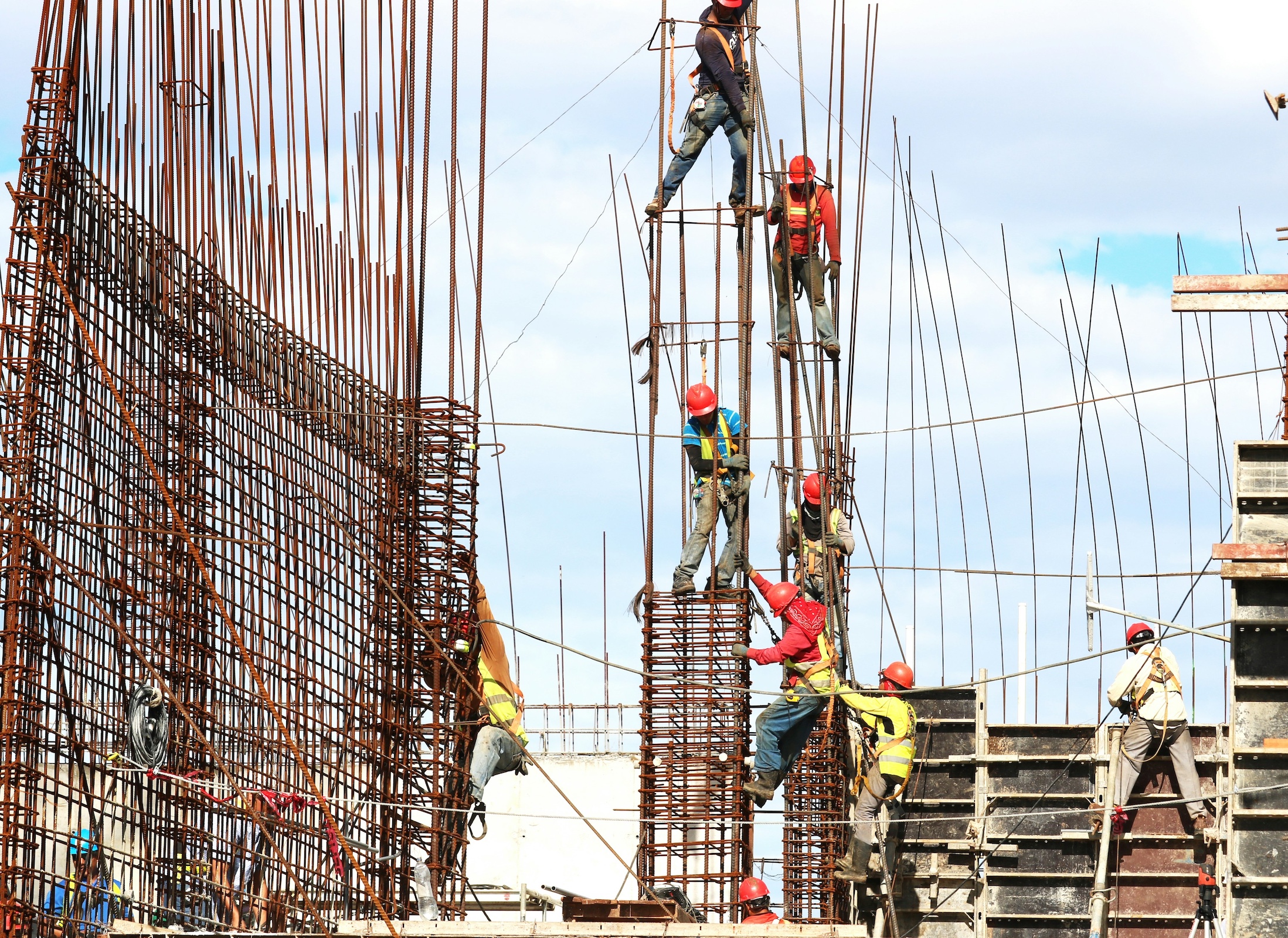
- Details
- Written by: Carlos Delgado
Claims in construction projects are inevitable, but their proper management can be the difference between success and failure.
Construction projects are frequently complex and involve a wide range of specialties. In addition, they face terrain and weather conditions that can become quite challenging.
In an ideal world, a project would be designed without flaws or omissions, the site would offer no surprises, and the weather would not affect construction activities. Supplies would arrive as scheduled, and the client would not introduce changes—or if they did, they would request the contractor’s impact estimate in a timely manner and approve it before implementing the changes.
However, we do not live in an ideal world. The reality of the industry includes design errors, unforeseen site conditions, unexpected weather events, and poorly managed scope changes—among other issues that can generate impacts on the contractor. Based on the risk allocation and responsibilities defined in the contract, it is often the case that these impacts should be acknowledged by the client.
At that point, the contractor must submit a claim. Naturally, the contractor is responsible for preparing a document that is clear, consistent, well-founded, and capable of demonstrating two things to the reader: the concept and the impact.
The Concept
The concept is essential. If it is not clearly defined or cannot be presented effectively, obtaining recognition of the impacts—no matter how significant—will be extremely difficult, if not impossible.
To demonstrate the concept, the document must clearly present the events or causes and directly relate them to risks or obligations under the client’s responsibility. It must also show that the contractor has acted diligently. This includes timely notification to the client about the occurrence or discovery of a potentially adverse condition. See also the article Early Warning Notice: https://delgadoconsultores.pe/index.php/en/articles/early-warning.
Finally, it is essential to prove the causal link between the event or series of events claimed and the impact on the contractor’s operations, costs, or scheduled deadlines.
The Impact
Only once the concept has been properly developed can the document focus on demonstrating the impact. This may relate to cost, schedule, or—as is often the case—a combination of both.
To demonstrate cost impact, the best approach is to rely on the unit costs and productivity rates stated in the contractual documents from the awarded bid. High-level tenders commonly request unit price analyses (APUs). While preparing these may be demanding for proposal teams, they are a worthwhile investment when substantiating claims.
Another key source of support for impact calculation is project control data, such as daily reports and schedule updates.
In cases where this information is missing, industry standards may be used, though they will always be less valuable than the APUs submitted with the bid and official project records.
Schedule impacts must necessarily demonstrate an effect on the critical path. However, it is not uncommon for the impacted activities not to be on the original critical path. A delay in non-critical tasks can be of such magnitude that it consumes their float and shifts the critical path, ultimately affecting the project’s end date.
When that happens, the time extension requested by the contractor will typically include an increase in indirect costs.
Structure
A good strategy for presenting a claim is to use two documents:
- A simple cover letter summarizing the case and stating the impacts
- A detailed supporting report
The supporting report is the most important document. It is where the case is presented in full, the concept is explained, the causal relationship is demonstrated, and the impact calculations are detailed.
A typical supporting report includes the following sections:
- Background: Basic project information such as project description, award and contract dates, start and end of works, and applicable laws.
- Factual background: A clear, simple, and objective narrative of the events.
- Legal grounds: A demonstration of the contract clauses that assign responsibility or risk for the presented events to the client, or exempt the contractor. This section may also refer to applicable law, such as provisions from the Civil Code.
- Impact analysis: First, the causal relationship between the events and the impact on the contractor must be demonstrated; then the cost and schedule impacts are calculated.
The supporting report must be written objectively and clearly enough so that any reader unfamiliar with the project can understand it.
In the end, the goal is for the reader to reach, by their own reasoning, the inevitable conclusion that the claim is valid and the impact calculations are sound.
Annexes
Lastly, and no less important, the supporting report must be capable of proving everything it states.
It is essential that each event or action described in the factual background section refers to documented evidence: daily reports, site diary entries, letters, emails between parties, third-party notices (such as from authorities or suppliers), etc. The same applies to the supporting documents in the impact analysis section.
All such documents must be attached as annexes, organized in such a way that the reader following the event narrative can access the supporting evidence immediately and be convinced of the accuracy of the facts and the correctness of the impact evaluation.
If you want to ensure that your next construction project is prepared to face and resolve claims effectively, contact us. At DC&R, with more than 30 years of experience in demanding sectors such as mining, oil & gas, and infrastructure, we offer expert solutions in claim management and contractual defense.
📩
📞 +51 998 070 145

- Details
- Written by: Carlos Delgado
In the world of engineering and construction projects, the scope of work is the cornerstone of the relationship between the client and the contractor.
The scope of work consists of a complete and detailed description—technically and reasonably feasible—of all activities under the contractor’s responsibility. Along with the technical and commercial conditions, the scope forms the basis on which a diligent contractor analyzes the optimal approach for executing the project, defines processes and procedures, and then develops cost and schedule estimates.
It is essential to remember that these estimates are initially used by the client to select the contractor. A recent post by Jonathan Soto Rosado on LinkedIn accurately pointed out that cost estimation does not end with contract award—it becomes the baseline for project execution.
I not only agree with this statement but go further: a responsible bid from a contractor reflects their understanding of the scope of work to be executed, taking into account the conditions provided by the client and the specific characteristics of the project site.
That understanding leads to a detailed work plan, from which processes, sequences, resources, productivity rates, and timelines are derived. These elements must be refined through iterations until they reach a balanced and feasible plan that meets client requirements. Often, clients have ambitious scheduling expectations which, depending on the industry, may even be unrealistic.
Naturally, understanding the scope and organizing the required plan to fulfill it under the given conditions must not be taken lightly. Responsible and successful contractors typically assign this critical task to highly qualified and experienced personnel—usually senior managers with a proven track record in similar projects.
The scope of work is also one of the main sources of disputes between client and contractor. Therefore, it must be clearly defined and mutually understood. A useful tool for this is the WBS (Work Breakdown Structure), which provides a hierarchical decomposition of the project deliverables.
It is common for the client to request a fully completed project, but parts of the scope may not be clearly defined in the initial bid documents. Hence, it is the contractor’s responsibility—from the bidding stage—to identify these gaps and propose clarifications and adjustments that ensure a complete and functional result. However, all clarifications and proposed modifications must be formally validated by the client. Only after such validation can the scope be considered agreed upon.
Once the scope is agreed, any variation must be mutually approved and may result in adjustments to price and schedule, provided there is a technically sound justification. Such justification must be based on the information and detail submitted with the awarded bid: processes, resources, productivity, durations, and so on.
At DC&R, we offer over 30 years of experience in complex engineering and construction environments for demanding industries such as mining, oil & gas, and infrastructure. We also provide specialized technical assistance to businesses interacting with engineering and construction companies—from bid management to contractual administration.
📩
📞 +51 998 070 145

- Details
- Written by: Carlos Delgado
In January 2025, the mining project El Algarrobo was awarded to Compañía de Minas Buenaventura, with an estimated investment of USD 2.753 billion. This polymetallic deposit, located in Tambogrande (Piura), is expected to initially process 5,000 tons per day, with the potential to increase to 15,000 t/d, and has a projected operational life of 7 years.
However, current projections estimate that the permitting, construction, and commissioning phases may take up to 11 years—that’s 57% longer than the project's operating life. This raises a critical question: How can the development phase exceed the duration of the productive life?
Legal Timelines vs. Operational Reality
By law, mine development in Peru should take 5 to 7 years from advanced exploration to construction authorization. Yet in practice, it often extends to 10–12 years or more due to factors such as:
- Repetitive observations and slow approvals from public institutions (SENACE, MINEM, ANA, etc.).
- Prolonged prior consultation and social conflict processes.
- Overlapping rights (mining, agricultural, communal, or forestry).
- Political instability and limited State technical capacity.
These delays have direct financial consequences. A 5-year delay may result in over USD 220 million in additional capital costs—approximately 8% of the total CAPEX. This erodes profitability, complicates financing, and may even jeopardize project viability.
What's at Stake for Peru?
Metallic mining contributes 9% to 11% of Peru's GDP, depending on commodity prices. It is a key driver of tax revenue, employment, and regional development. Regulatory inefficiencies not only increase project costs but also postpone the social and economic benefits that these investments bring to communities and the nation.
What Needs to Change?
At DC&R, we believe Peru urgently needs:
✅ Streamlined, coordinated processes across government agencies
✅ Integrated territorial management to avoid land-use conflicts
✅ Informed and technically grounded public participation
✅ Specialized technical guidance throughout the investment lifecycle
With over 30 years of experience in high-demand engineering and construction environments such as mining, oil & gas, and infrastructure, DC&R supports investors through every phase of their industrial projects—from bid management to contract administration, always with a strategic and technically sound approach.
📩
📞 +51 998 070 145

- Details
- Written by: Carlos Delgado
Throughout history, effective negotiation methodologies have been studied and applied across different fields to achieve lasting and mutually beneficial agreements. These methodologies are grounded in principles such as thorough preparation, analysis of the BATNA (Best Alternative to a Negotiated Agreement), the search for integrative solutions, and the building of trust between parties. This article analyzes those principles and compares them with the current approach of the United States government regarding tariffs—without expressing opinions on trade policy itself, but rather evaluating the effectiveness of the negotiation methodology and the medium- and long-term effects it may generate in international relations.
Successful negotiation requires, first and foremost, detailed preparation. This involves a deep understanding of one's own interests, priorities, and constraints, as well as those of the counterpart. In effective negotiation, a clear strategy is established, alternatives are assessed, and a Zone of Possible Agreement (ZOPA) is defined to identify areas of flexibility. Moreover, transparency in communication and the establishment of ongoing dialogue channels are essential to foster trust and facilitate conflict resolution during the process.
In contrast, the current practice of imposing tariffs reveals elements of a more unilateral and, at times, ambiguous decision-making process. For example, conflicting messages within the same administration are observed regarding the purpose of tariffs. On one hand, they are presented as punitive measures aimed at correcting trade practices deemed unfair; on the other hand, they are occasionally framed as bargaining tools to pressure other countries into changing their policies. This duality can be interpreted as a mixture between a distributive approach—where costs are imposed to achieve unilateral gains—and a superficial invitation to engage in bilateral or multilateral negotiations.
In terms of effectiveness and efficiency, the traditionally recommended negotiation methodology involves not only the application of pressure tactics but also the development of a structured and transparent process. Tariffs, as a negotiation tool, could prove more effective if used within a clear and predictable negotiation framework. The absence of a procedure that includes consultation phases, impact analysis, and the establishment of concrete commitments can generate uncertainty among trade partners, hindering the construction of strong medium- and long-term relationships.
The potential effects of this approach are diverse. In the medium term, the lack of a coherent strategy could undermine the trust of other nations, who may perceive tariff measures as arbitrary or as a form of unilateral imposition. This could lead to retaliatory responses or the activation of compensatory measures, complicating trade and coordination in international forums. In the long term, persisting with this methodology could erode the foundations of negotiation based on consensus and reciprocity, generating tensions that affect multilateral agreements and the stability of the global trade system.
In conclusion, while effective negotiation methodologies advocate for a well-defined process based on analysis, preparation, and constructive dialogue, the current tariff strategy of the United States government shows signs of a hybrid and sometimes inconsistent approach. This situation could compromise the effectiveness of future negotiations, affecting both bilateral relations and multilateral agreements, and generating risks that will be reflected in economic and strategic ties with other countries. Implementing a more structured and transparent process could ultimately lead to more predictable and sustainable outcomes.
In times of change, when agility and economy are needed at all levels, the use of specialized services provides that precise mix of capacity, effectiveness and efficiency that organizations need to succeed.
At DC&R we are able to meet these requirements with professional solvency and the experience of more than 30 years in complex engineering and construction environments for heavy industrial markets of high demand such as mining, gas & oil, or energy, as well as for infrastructure and commerce.
DC&R also offers technical assistance services to businesses that need to interact with engineering and construction companies, from tender and project management to contract administration.

- Details
- Written by: Carlos Delgado
No one likes to deliver bad news. This aversion is universal. However, when we are
developing projects, having information as early as possible is immensely helpful. When
potential bad news is identified with sufficient time, it is possible to take mitigation
measures or even solve the problem entirely.
An old boss of mine used to say that solving a problem only requires two conditions:
knowing that it exists and having the will to solve it. Clearly, if we are unaware of a
problem's existence, no matter how many resources we have at our disposal, we simply will
not be in a position to solve it.
This is why timely notification, or early warning, is fundamental. Unfortunately, in our market
and due to the distribution of responsibilities between the client and contractor, it is often
common for the party discovering a problem to remain silent. If the problem falls under their
responsibility, the silence often stems from a naive hope of finding a solution before the
other party becomes aware. If the problem is the responsibility of the other party, this
silence may reflect bad faith, hoping that the issue will be detected too late, causing the
other party to fail and potentially providing some advantage or "cover" for one’s own
shortcomings.
In either case, we find that a problem may have been identified, but there is no will to solve
it. This ultimately undermines the project, and a project failure is a failure for both the
contractor and the client.
In other articles, I have already mentioned the principle of partnership established between
the client and the contractor (https://delgadoconsultores.pe/index.php/en/articles/contracts-risks-and-collaboration). In reality, they are partners whose success is indubitably
linked to the success of the project . This also extends to other parties involved in the 1
contract or project, such as Project Management, Supervision, the Engineer, or any other
member of the project team, regardless of their title.
Of course, there is a cultural aspect at play here. Latin Americans (I will refrain from naming
countries to avoid sensitivities) tend to be more conflict-averse than Anglo-Saxons (let’s say
Northern Europeans). I’ve been told that in some Southeast Asian cultures, the aversion to
conflict is even greater than that of Latin Americans, but I cannot confirm this.
The core issue is that conflict itself is not negative. Early warning means addressing the
problem, and this is essential. This is why, for some years now, many contracts have
incorporated the obligation for contractors to report any situation that may negatively affect
their performance on the project. Of course, as we are talking about "traditional" contracts
developed by clients, the responsibility of reporting is generally placed entirely on the
contractor.
Standardized contracts such as FIDIC or NEC establish the obligation to issue early
warnings. In particular, NEC contracts stipulate that early warnings must be issued by both
parties when there are situations that may affect the contractor's costs or dates, whether
key dates (milestones) or the completion date.
This is critically important. Under NEC, the Project Manager (representing the client) is
required to maintain an early warning register and issue it for the first time within a week of
the contract’s start date. The NEC contractor, for their part, is obligated to contribute to the
register—which remains managed by the Project Manager—and if an unfortunate event
occurs that was known or should have been known to the contractor but was not warned
about, the impact evaluation is carried out considering what would have occurred had the
warning been given on time. In other words, the contractor is only recognized for the
residual effect after analyzing what could have been mitigated through preventive or
corrective actions by all parties.
Conversely, if the adverse event was known to the Project Manager and no warning was
issued, the client is required to recognize the impact on the contractor when the event
occurs.
In this way, the NEC contract mechanism encourages both parties to inform as soon as
they become aware of any potential event that could affect the project. Naturally, as we are
discussing risks, this refers to both threats and opportunities. Opportunities are positive-
risk events with potential beneficial impacts, and the early warning mechanism provides
incentives to take advantage of these opportunities.
For contractors, proposing ways to reduce costs or improve schedules opens the door to
sharing benefits with the client. This happens directly under some of the standard options in
NEC contracts.
For the client, it is evident that taking advantage of any opportunity to reduce costs or
improve schedules is a direct benefit for the owner.
Even when not using a standardized contract but rather a traditional one, early warning is a
good practice for all contractors. I have had personal experiences where, upon notifying the
client of an issue for which we were responsible (I should note here that I have mostly been
a contractor), the client agreed to extend the impacted date because it did not pose a real
problem for them. On another occasion, when my supplier of a large crane failed to meet
the equipment availability date for a critical lift, timely notification to the client allowed them
to inform us that they had a suitable crane available for the necessary dates at a very
reasonable rate. In summary, early warning led to solutions with little or no impact, and the
contractor-client relationship was strengthened.
I also recall a case where, after issuing an early warning to the representative of a major
client about an estimated four-week delay, I received the response: "I don’t care; you
cannot be late because I have my own delivery commitments." Of course, no one can work
miracles, and as the contractor’s operations manager, I responded that we would take all
viable measures and report weekly on how much of the original delay we were able to
recover.
And so we did. After about a month and a half, we managed to recover about two weeks of
the delay, meaning that the delivery impact would now be just two weeks instead of four. At
that point, I received a speakerphone call from my client’s senior management, which
included the representative I reported to weekly and other team members. The call was to
demand adherence to the original schedule since the delivery to their end user was
imminent.
I had to explain that we had notified them of the delay about a month and a half earlier, that
I personally reported weekly to their representative and team on the mitigation measures
and progress, and that we had already halved the impact.
The senior management of my client was momentarily silent and then began questioning
their own team about whether they had informed the end user in a timely manner. The
answer was no. From that moment, the pressure from the call shifted away from us as the
contractor and instead was directed—quite harshly—toward the client’s internal team.
The lesson is simple: when problems are notified in time, measures can be taken. But if
they are not notified and failure occurs, the impacts are greater, not only economically but—
most importantly—reputationally.
In times of change, when agility and economy are needed at all levels, the use of specialized services provides that precise mix of capacity, effectiveness and efficiency that organizations need to succeed.
At DC&R we are able to meet these requirements with professional solvency and the experience of more than 30 years in complex engineering and construction environments for heavy industrial markets of high demand such as mining, gas & oil, or energy, as well as for infrastructure and commerce.
DC&R also offers technical assistance services to businesses that need to interact with engineering and construction companies, from tender and project management to contract administration.
